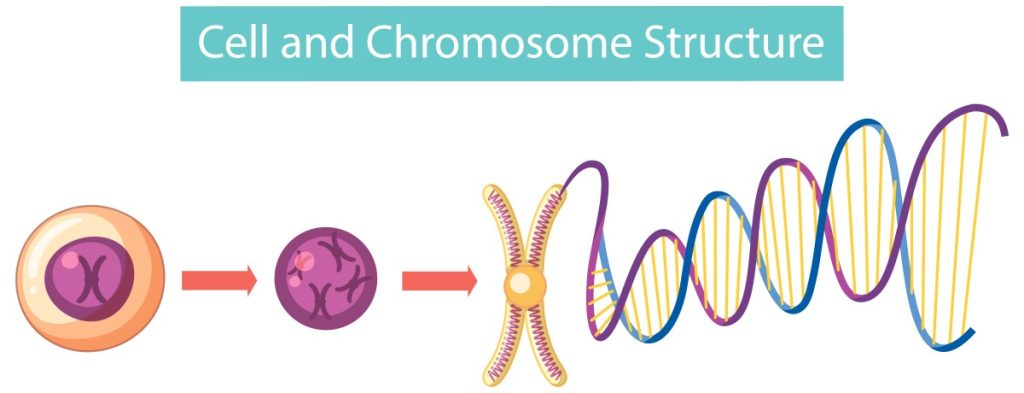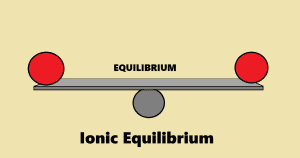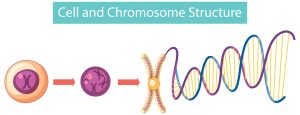Introduction
Chromosomes are one of the most fundamental biological structures in all living organisms, often referred to as the “blueprints of life.” These thread-like structures, located in the nucleus of each cell, carry genetic information in the form of DNA (deoxyribonucleic acid). Chromosomes are essential for the inheritance of traits, cell division, and the proper functioning of biological systems. In this blog, we will explore the structure, function, types, and significance of chromosomes in detail.
Table of Contents
ToggleWhat Are Chromosomes?
A chromosome is a long, continuous thread of DNA wrapped around proteins called histones, which helps package the DNA efficiently. Chromosomes contain many genes, regulatory elements, and other nucleotide sequences that dictate an organism’s traits and biological processes. In simple terms, they are the carriers of genetic material from one generation to the next, ensuring that the instructions for building and maintaining an organism are passed on accurately.
Structure of a Chromosome
Chromosomes are made up of two key components: DNA and proteins. Let’s break down the structure of a chromosome:
-
DNA (Deoxyribonucleic Acid):
- DNA is the molecule that encodes genetic information. It is composed of two long strands of nucleotides twisted into a double helix. Each nucleotide consists of a sugar (deoxyribose), a phosphate group, and a nitrogenous base (adenine, thymine, cytosine, or guanine). The sequence of these bases forms the genetic code.
-
Histones:
- To fit the long DNA strands into the nucleus, DNA is tightly wound around proteins called histones. This forms a structure called nucleosomes, which resemble “beads on a string.” The nucleosomes further coil and fold to form the compact structure of a chromosome.
-
Chromatid and Centromere:
- Each chromosome consists of two identical halves called chromatids, which are held together at a central region known as the centromere. During cell division, these chromatids are pulled apart to ensure that each daughter cell receives a complete set of chromosomes.
-
Telomeres:
- The ends of each chromosome are capped by structures called telomeres. Telomeres protect the chromosome from degradation and prevent the loss of genetic information during cell division. Over time, as cells divide, telomeres shorten, which is associated with aging and cell death.
Types of Chromosomes
Chromosomes are classified into different types based on their size, shape, and the position of the centromere. The two main categories of chromosomes are autosomes and sex chromosomes.
-
Autosomes:
- Autosomes are non-sex chromosomes that carry the bulk of an organism’s genetic information. Humans have 22 pairs of autosomes (44 chromosomes in total), which determine most of the body’s traits, such as height, hair color, and metabolic functions.
-
Sex Chromosomes:
- Sex chromosomes determine an individual’s biological sex. In humans, there are two types of sex chromosomes, X and Y. Females typically have two X chromosomes (XX), while males have one X and one Y chromosome (XY). The Y chromosome carries genes responsible for male sex determination and development.
Chromosome Number in Different Organisms
The number of chromosomes in an organism varies widely across species. This number is known as the diploid number (2n), representing the total number of chromosomes in a somatic (non-reproductive) cell. Some examples of chromosome numbers in different species are:
- Humans: 46 chromosomes (23 pairs)
- Fruit flies: 8 chromosomes (4 pairs)
- Dogs: 78 chromosomes (39 pairs)
- Rice plants: 24 chromosomes (12 pairs)
The haploid number (n) refers to the number of chromosomes found in gametes (sperm and egg cells), which is half the diploid number. For humans, the haploid number is 23.
Function of Chromosomes
Chromosomes serve several crucial functions, each contributing to the proper functioning and development of organisms. Key functions include:
-
Genetic Information Storage:
- Chromosomes house genes, the fundamental units of heredity. Each gene encodes specific instructions for building proteins, which carry out a wide array of cellular functions. By storing this information in an organized manner, chromosomes ensure that cells can access the instructions they need to perform their tasks.
-
Transmission of Genetic Information:
- During reproduction, chromosomes ensure the accurate transfer of genetic information from parent to offspring. This transfer occurs during the formation of gametes through a process called meiosis, where chromosomes are shuffled and halved, allowing for genetic diversity in offspring.
-
Regulation of Gene Expression:
- Chromosomes play a critical role in regulating when and where certain genes are expressed. Specific regions of chromosomes, known as enhancers and silencers, can activate or repress gene activity, depending on the needs of the organism at any given time.
-
Cell Division and Growth:
- Chromosomes are central to the process of mitosis (cell division), ensuring that each new cell receives an identical copy of the parent cell’s genetic material. This is essential for growth, tissue repair, and development in multicellular organisms.
Chromosomal Abnormalities and Disorders
Errors in chromosome structure or number can lead to a variety of genetic disorders. These abnormalities can occur during cell division, often resulting in diseases or developmental issues. Some common chromosomal disorders include:
-
Down Syndrome (Trisomy 21):
- Down syndrome is caused by the presence of an extra copy of chromosome 21. Individuals with this condition experience developmental delays, intellectual disabilities, and characteristic physical features.
-
Turner Syndrome:
- Turner syndrome occurs when a female is born with only one X chromosome (instead of the typical two). This condition can lead to short stature, delayed puberty, and infertility.
-
Klinefelter Syndrome:
- Klinefelter syndrome occurs in males who have an extra X chromosome (XXY). It can result in symptoms such as reduced testosterone levels, delayed puberty, and infertility.
-
Cri-du-chat Syndrome:
- This rare disorder is caused by a deletion of a portion of chromosome 5. Individuals with Cri-du-chat syndrome typically have intellectual disabilities, delayed development, and a distinctive, high-pitched cry.
-
Edward Syndrome (Trisomy 18):
- Edward syndrome is a severe genetic disorder caused by the presence of an extra chromosome 18. It is associated with serious developmental issues and has a high mortality rate in infancy.
Chromosomes and Evolution
Chromosomes also play an essential role in evolution by contributing to genetic variation. During sexual reproduction, crossing over occurs during meiosis, where segments of DNA are exchanged between homologous chromosomes. This genetic recombination introduces variation in the offspring’s genome, providing the raw material for evolution. Over time, these genetic variations can lead to adaptations and speciation.
Additionally, changes in chromosome number and structure can drive evolutionary change. For instance, polyploidy (the presence of extra sets of chromosomes) is a common phenomenon in plants that can lead to the development of new species.
Chromosomes in Modern Research
Chromosomes are central to many fields of scientific research, including genetics, genomics, and medicine. The sequencing of the human genome, completed in 2003, revealed the entire genetic blueprint stored within our chromosomes. This monumental achievement has paved the way for advances in understanding genetic diseases, developing gene therapies, and improving personalized medicine.
Moreover, the study of chromosomes in cancer research has provided valuable insights into how chromosomal changes, such as mutations and translocations, contribute to the development of tumors.
Conclusion
Chromosomes are indispensable to life, serving as the carriers of genetic information and the drivers of biological diversity. They play vital roles in heredity, development, and evolution, ensuring that the instructions for life are faithfully passed on from one generation to the next. Understanding chromosomes, their structure, and their functions allows us to better appreciate the complexity of living organisms and the potential for advances in fields like medicine, genetics, and biotechnology.







